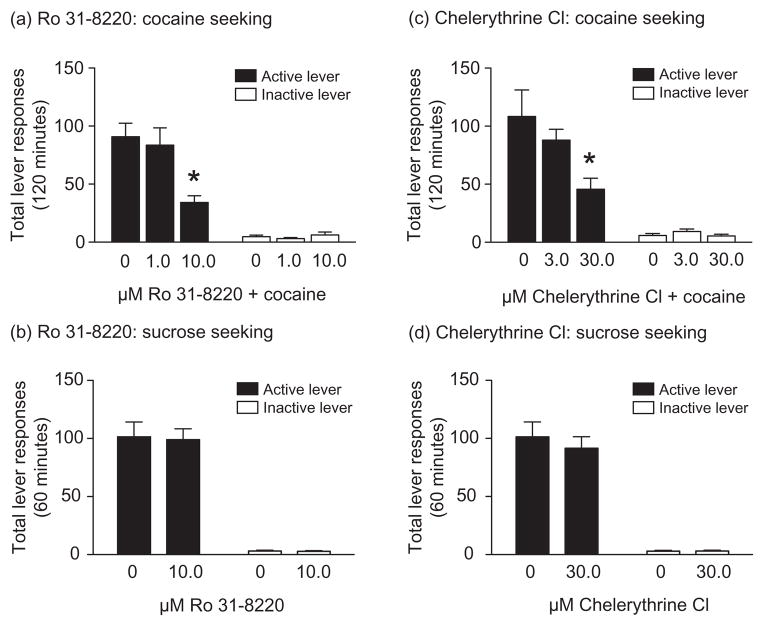Figure 3.
Microinjection of the PKC inhibitors Ro 31–8220 and chelerythrine chloride into the accumbens core dose-dependently attenuated cocaine, but not sucrose, seeking. (a) Total number of responses (mean ± SEM) on the active and inactive levers during the reinstatement test session following a priming injection of cocaine (10 mg/kg, i.p.) in rats pretreated with vehicle (n = 12), 1.0 (n = 11) or 10.0 (n = 12) μM Ro 31–8220 into the accumbens core. *P < 0.05 between vehicle and 10.0 μM Ro 31–8220 with regard to active lever responses (Bonferroni). (b) No differences in total active or inactive lever responses (mean ± SEM) during sucrose reinstatement test sessions following intra-accumbens core administration of vehicle or 10.0 μM Ro 31–8220 (n = 9) were observed (unpaired t-tests, P > 0.05). (c) Rats were administered vehicle, 3.0 or 30.0 μM chelerythrine chloride (n = 12/treatment) into the accumbens core before a priming injection of cocaine (10 mg/kg, i.p.) during the reinstatement phase. Depicted are the total (mean ± SEM) active and inactive lever responses during the reinstatement test sessions. The asterisk represents a significant difference in active lever responding between rats treated with vehicle and rats treated with 30.0 μM chelerythrine chloride (Bonferroni, P < 0.05). (d) No significant differences in responding on the active or inactive levers (mean ± SEM) were found between treatments following intra-accumbens core administration of vehicle or 30.0 μM chelerythrine chloride (n = 10) during sucrose reinstatement test sessions (unpaired t-tests, P > 0.05)

